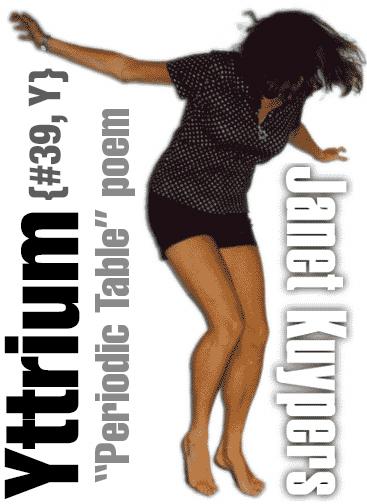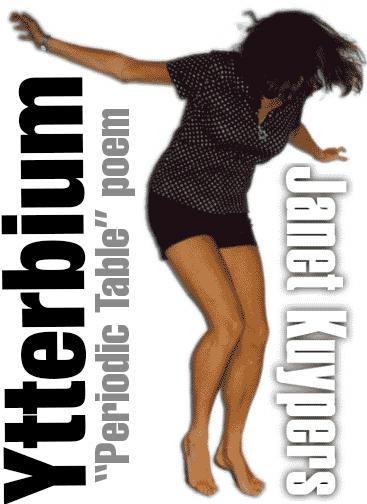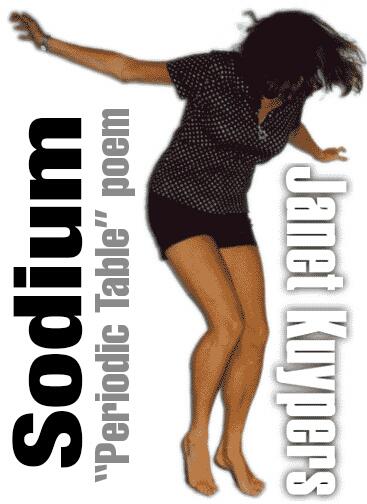Yttrium
Janet Kuypers

from the “Periodic Table of Poetry” series (#39, Y)
7/14/13
Recently NASA sent a rocket
to collide with a comet
to gather comet dust,
so they could learn about comets,
which contain the primordial parts
of what started this solar system.
A compact disc bearing my name
was mounted on the impactor
spacecraft shot into space
on this Deep Impact mission.
Although this was the first NASA
mission with my name on it,
it was also the first NASA mission
to learn about what’s deep inside
a comet.
The rocket combustion chamber
that shot this impactor spacecraft
on it’s collision course
with Comet Tempel 1,
had a silver-colored lining
of an alloy of nickel, chromium,
aluminum and Yttrium.
Yttrium makes sense, because
Yttrium has been used
in places from MRI scanners
(to help us heal)
to CRT tubes on TV sets
(to help us see).
Yttrium makes element
compounds stronger
(good for stellar travel)…
Besides, the fact that Yttrium
is colorless, odorless,
and not naturally magnetic
gives it an added plus
while being a part of the launching
of the rocket I tacked my name onto
when looking for a comet.
It’ll help us see more than
what’s inside our bodies, or
what a cathode ray tube could —
it may help us see
where we came from
in this solar system too.


